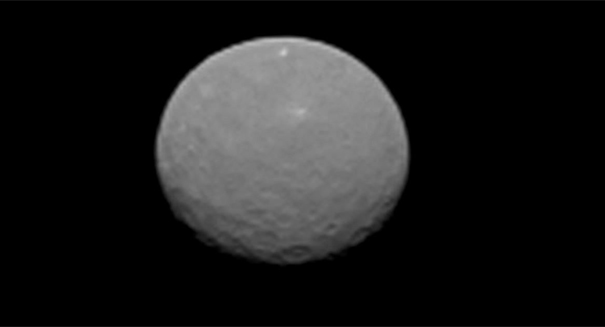
Stunning images of a planet far, far away.
NASA’s Dawn spacecraft is sending back some pretty stunning photos.
The probe, which spent months studying asteroid Vesta, is currently approaching its second target. The images currently being sent back are some of the most stunning images of the far reaches of the solar system.
The spacecraft has sent photos of dwarf planet Ceres, a small astronomical body that spans nearly 500 miles across and scientists say is likely covered in thin crust of ice. Ceres, the largest object in the asteroid belt, sits between the orbits of Jupiter and Mars and has long been thought to be a remnant of the early days of the solar system.
Speaking in 2013, Britney Schmidt, science team liaison for the Dawn Mission, and Julie Castillo-Rogez, planetary scientist from JPL, spoke in an Google Plus Hangout titled ‘Ceres: Icy World Revealed?’ about the growing excitement related to the innermost icy body. The team noted that Ceres was a unique body within the solar system, and that it would likely provide astronomers with a better understanding of how the solar system evolved over hundreds of millions of years.
“I think of Ceres actually as a game changer in the Solar System,” Schmidt said. “Ceres is arguably the only one of its kind.”
Launched from Earth in September 2007, the spacecraft is approaching it second destination after orbiting asteroid Vesta. The space probe, during its time orbiting Vesta, obtained nearly 40,000 images of the asteroid in striking detail. The mission was widely regarded as a training mission ahead of NASA’s intended mission to land a probe on an asteroid.
Among the images sent back from the probe include one that seems to show a significant “white spot.” Some astronomers have speculated the white spot may indicate the presence of water ice on the planet. While the early images make it difficult to tell exactly what is taking place on Ceres’ surface, at a resolution of 8.5 miles (14 kilometers) per pixel, the pictures represent the sharpest images to date of the dwarf planet. NASA has even suggested the dwarf planet make harbor underground lakes that could contain microbial life.
The probe is expected to arrive one the night of March 5. Once it does so, it will become the first spacecraft ever to orbit Ceres — and the first to circle two different solar system bodies beyond Earth, according to NASA. NASA said the achievement is largely due to the unique propulsion system employed by the spacecraft. It currently relies on an ion propulsion system that makes it far more efficient than other space probes. NASA says the ion propulsion system could someday be used by astronauts on a mission to Mars.
The second trip follows in the wake of a trip to Vesta, the second most massive body in the asteroid belt. NASA has called the mission a success, saying the data collected during its time orbiting the asteroid will likely provide years of valuable data for scientists on Earth.
The mission is managed by the Jet Propulsion Laboratory for NASA’s science mission directorate in Washington.
Leave a Reply